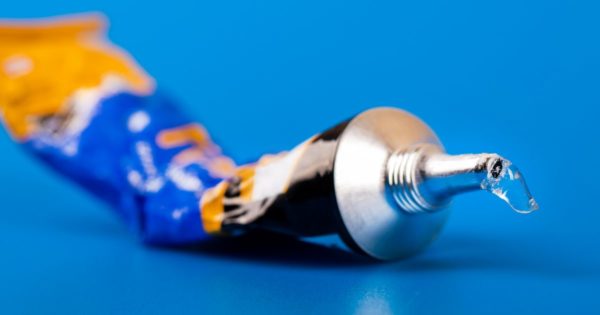How Long Does E6000 Take to Dry? – A Detailed Guide
E6000 is a crowd favorite in the world of adhesives. It effortlessly flaunts its tensile strength and reliability. You can use it on almost everything — well, most things. But you probably already know that.
But how long does E6000 take to dry? And how can you get the most out of it for crafts and repairs, particularly woodwork? Let’s dig in.
What Is E6000: An Overview
The E6000 is a craft adhesive recommended for use in the industrial sector due to its incredible tensile strength, flexible use, and uncompromising performance. In addition, E6000 provides extraordinary results even for solid components like wood, metal, or fiber.
The best part is, this glue has caught the eye of millions of Americans — it won’t be wrong to say that it sells itself. While its adhesive rating is similar to other products on the market, none of the adhesives are as versatile as E6000.
Need to stick a fabric to metal? You got it. Wood to glass? Not a problem. Be it vinyl, plastic, metal, wood, rubber, concrete, or ceramic — you can use E6000 on them all and more.
E6000 has excellent results for indoor and outdoor applications — even with extreme temperatures — as it offers maximum UV resistance and is waterproof.
It is also multi-purposeful. When it comes to woodwork, you can use it for both indoor and outdoor furniture. It’ll ensure that your project is unbreakable, chemical-resistant, and waterproof.
Specifications
Pros:
Cons:
How Long Does E6000 Take to Dry Completely?

It all comes down to the objects being glued. When it comes to wood, you have to consider its absorptive characteristics and porosity. As a general rule of thumb, E6000 begins to feel tacky two minutes in and sets in at about 10 minutes. A complete cure can take anywhere between 24 to 72 hours, depending on the materials you are gluing.
What Is the Best Way to Apply E6000 Glue?
Are you wondering how to apply this adhesive? We've got you covered. Here's a step-by-step guide to applying E6000 glue:
Applying the glue isn't going to be a long process so make sure you have everything within your reach.
1. Prepare the Surface You're Going to Work On
This involves ensuring that all the pieces you want to repair or work on are free of dust particles or any residue which might negatively affect the glue's performance.
This step also requires you to coat certain surfaces to prevent unnecessary distortion from the glue. It's best if you read the user manual given by the manufacturer along with the product.
2. How To Apply E6000 Glue
The application process of the glue is unaffected by the type of material you're putting the adhesive on. A narrow nozzle design makes the application relatively simple.
The instructions manual suggests first applying the glue and bonding both pieces for five minutes, followed by taking them apart and then bonding again. As weird as it sounds, this is the preferred way to bond the tiny pores within the surfaces, ensuring maximum bond strength for different types of materials.
3. Leave It to Dry
Once you've applied the glue, make sure you keep the surfaces pressed against each other for at least the next three minutes. E6000 starts to get tacky around this time and will begin setting after about the 10-minute mark. You may also use a hairdryer to speed up the process.
4. Resealing the Adhesive Tube
Keep in mind that not sealing the tube correctly may cause your E6000 to dry out or evaporate after some time. Fortunately, this product has a shelf life of about one to two years, but you have to make sure that the glue is adequately sealed after every use.
What Should You Not Use E6000 On?
E6000 does not work on styrofoam, polypropylene, polyethylene, and polystyrene — we don't recommend its use for the said materials. You can apply it, but the results won't be as strong as other glue brands.
You might be able to get reliable results, but you'll probably have to apply it multiple times in small doses.
Benefits of Using E6000 While Woodworking
E6000 ensures excellent adhesion to wood. It is one of the most effective adhesives you can use to glue wood. This is particularly because E6000 packs excellent resistance against moisture, UV light, and chemicals. It can also stand strong against a wide temperature range.
Following are a few primary benefits of using E6000 while woodworking:
Summing Up: FAQs About E6000
As you now have ample information about this adhesive and how long E6000 takes to dry up — we’re going to conclude with a few more frequently asked questions about the topic.
Can E6000 Be Used for Sealing Food Packaging?
No. It should be avoided at all costs! Eclectic products explicitly forbid the use of E6000 where it comes in contact with any food items.
What Is the Difference Between E6000 and Goop?
They both are made of the same material and by the same manufacturer: Eclectic Products. But, the core difference between the two is viscosity. Goop is thicker, while E6000 has a running texture and can level itself.
Last Updated on November 11, 2022 by Tom Bradly
